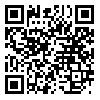Background: Given the sensory network dysfunction observed in migraine, this study aimed to investigate the effects of upper cervical mobilization on sensory brain activation using functional magnetic resonance imaging (fMRI) during trigeminal pain stimulation.
Methods: Thirty-nine migraine patients were randomized into an intervention group (n = 22), receiving upper cervical mobilization, or a sham group (n = 17). All participants underwent fMRI scans before and after ten sessions. Trigeminal pain was induced using intranasal ammonia, and pain intensity was rated using the Visual Analog Scale (VAS). Brain activity was analyzed in sensory-related regions, including the primary somatosensory cortex (S1), angular and supramarginal gyri, superior parietal lobule (SPL), and thalamus. Outcomes included Z-score (activation deviation), BOLD signal change (regional hemodynamic response), voxel activation volume, and Consistency of Participation (CoP). Group differences were analyzed using ANCOVA (adjusted for baseline), with effect sizes reported using epsilon squared (ε²) or partial eta squared (η²).
Results: The mobilization group showed a greater pain reduction (Cohen’s d ≈ 2.60) than the sham group (r ≈ 0.64). Voxel count in bilateral supramarginal gyri decreased significantly (η² ≈ 0.21, 0.11), as did BOLD signal in right SPL (ε² ≈ 0.08). Right S1 activation deviation correlated with pain reduction (r = 0.69). Pain reduction also correlated negatively with thalamic BOLD response (ρ ≈ –0.36) and right angular gyrus CoP (ρ ≈ –0.35).
Conclusion: Upper cervical mobilization significantly reduced migraine pain and modulated activity in brain regions associated with pain and sensorimotor processing, suggesting a potential neurofunctional mechanism of action
| Rights and permissions | |
 |
This work is licensed under a Creative Commons Attribution-NonCommercial 4.0 International License. |





